Surgical Periodontal Treatments Corpus Christi
Your Home for Advanced Periodontal Care
In some cases, standard periodontal treatments aren’t enough; many periodontal patients require surgical care to restore their oral health or prepare their smiles for dental implants. As a board-certified periodontist, Dr. Garcia is trained to perform a wide variety of surgical procedures to meet the needs of his patients. To learn more about the available surgical periodontal treatments at our Corpus Christi periodontal office or to schedule a consultation, please reach out to our team at South Texas Periodontics & Implants today.
Why Choose South Texas Periodontics & Implants for Surgical Periodontal Treatments?
- Highly Trained, Board-Certified Periodontist
- State-of-the-Art Soft Tissue Lasers
- Biopsies for Oral Cancer Performed In-House
Gum Grafting
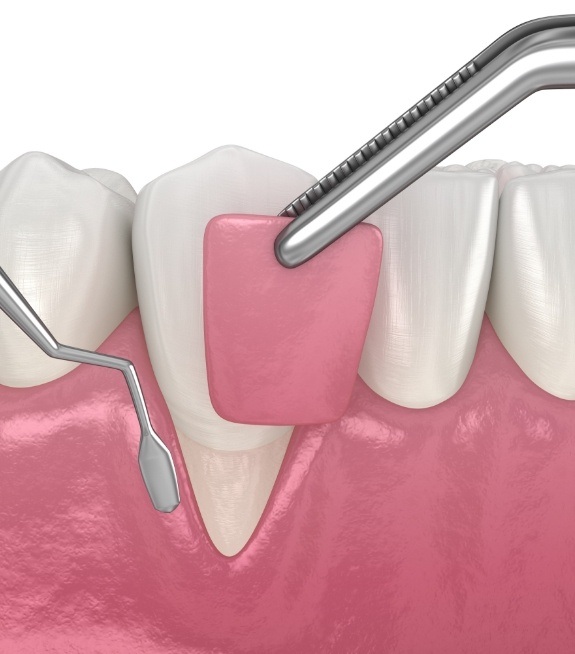
Gum tissue lost due to gum disease can’t grow back. To cover up the tooth roots that have been exposed by gum recession, we may perform a procedure known as gum grafting. A small amount of tissue is taken from elsewhere in your mouth (usually the roof) and transplanted to the area where the recession has occurred. It’s then stitched in place so that it can join with the surrounding tissue over time, thus reversing the damage done due to gum disease.
Bone Grafting
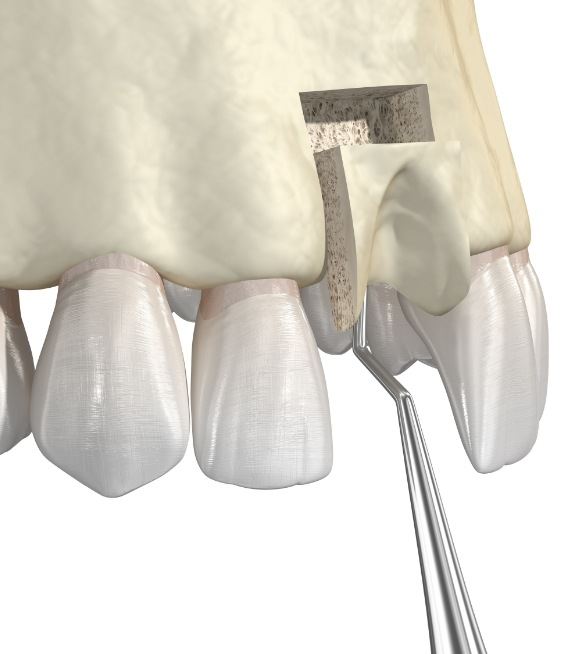
Without the stimulation of natural teeth, the bone in your jaw will start to resorb, or shrink. This can be a serious obstacle for implant surgery since dental implants need a sufficient amount of bone to join with. With bone grafting, we can take bone from another part of your body and transplant it to the area where dental implants need to be placed. Doing so encourages the body to create new bone tissue, rebuilding the jaw to the point where implant surgery is once again a viable option.
Crown Lengthening
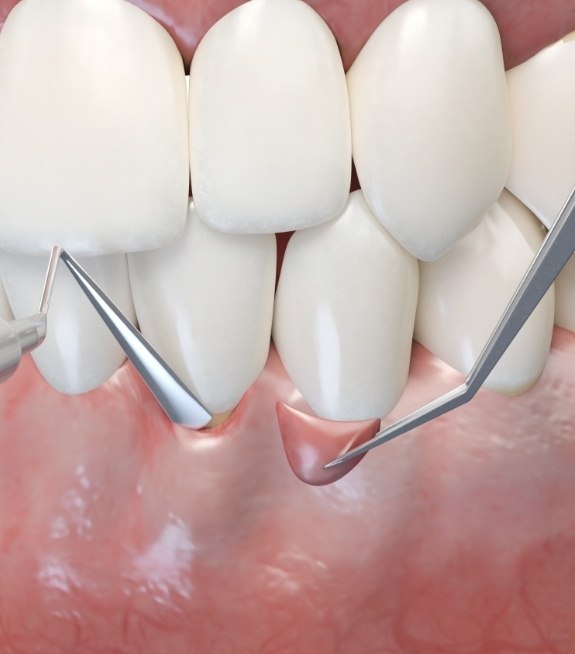
Sometimes your dentist won’t be able to place a dental crown because the tooth in question is too short or has broken beneath the gum line. To make room for the crown, we can perform a crown lengthening procedure to remove the gum tissue that’s covering the tooth. This is a relatively simple procedure that does not require much post-operative care; after about four to six weeks, we should be able to clear you to receive a crown or another type of restoration.
Learn More About Crown Lengthening
Laser Periodontal Surgery
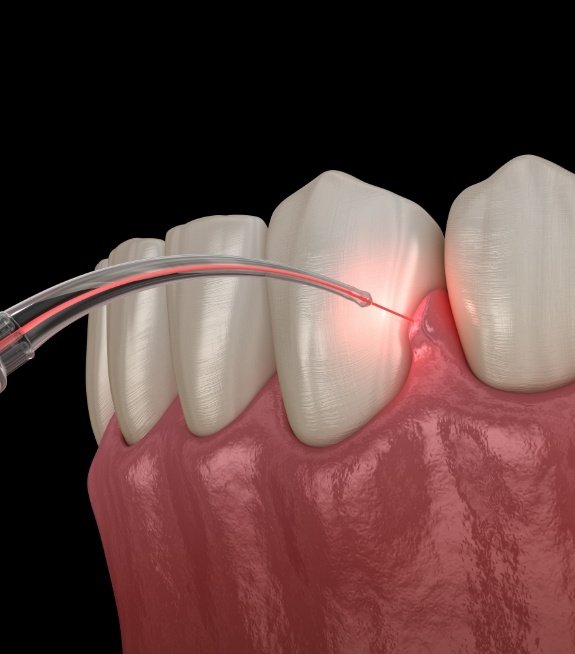
Soft tissue lasers have given us new options when it comes to treating gum disease, and now, we’re capable of using our Biolase Waterlase device, a sophisticated soft tissue laser, to carefully and gently remove infected tissue while leaving the healthy parts of your gums completely alone. In fact, the laser will cause very little discomfort compared to traditional methods, which normally involve a scalpel. Furthermore, the laser cauterizes as we work, meaning that there’s far less bleeding or discomfort following what’s already a very quick and convenient process!
How Laser Periodontal Treatment Works

LANAP is an FDA-approved laser-assisted technique that stands for laser-assisted new attachment procedure. It works by using a specialized, concentrated beam of light energy to remove infected gum tissue and bacteria from the pockets around the teeth. The laser targets only the diseased and inflamed tissue, leaving healthy gum tissue totally intact. This means far less pain, less bleeding, and a much faster recovery—in addition to absolutely unmatched precision.
The process begins with the area of the mouth being numbed, and once you’re comfortable, the laser is used to gently begin removing infected tissue and bacteria. The laser energy is absorbed by pigmented bacteria and inflamed tissues, causing them to be vaporized and thoroughly eliminated. This helps to remove the presence of gum disease while also sterilizing the area. Additionally, the laser can be used to access and remove tartar buildup beneath the gum line, aiding in the restoration of healthy gum tissues and helping them reattach to the tooth.
The Benefits of Laser Surgery Treatment
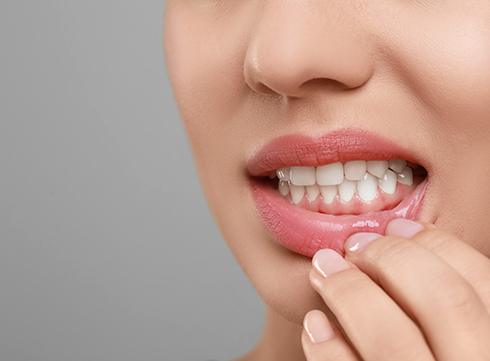
Laser gum disease therapy offers many benefits over traditional treatment options, including:
- Minimally Invasive – The dental laser used is incredibly precise and only targets compromised gum tissue, meaning minimal pain, bleeding, and swelling during and after the procedure.
- Quick Recovery – Most patients end up able to return to their normal daily activities within a day or two of the procedure since the process and recovery timeline are both much faster.
- Highly Effective – Laser therapy doesn’t just resolve the current problem—it promotes future dental wellness by improving gum health and decreasing the risk of further complications.
- Reduced Risk of Infection – Since the laser sterilizes as it works, the risk of infection is substantially reduced. This also means a reduced need for antibiotics afterward.
Aftercare Tips for Laser Periodontal Surgery

Recovering from laser periodontal surgery is far easier and quicker than conventional gum disease treatments. Where older techniques may have called for multiple weeks of healing, laser treatments do not, and most patients can resume their normal activities quickly. In any case, some aftercare tips to keep in mind include:
- Even though the recovery timeline will be shorter, it’s still in your best interest to take it easy for a day or two after your surgery. Avoid physical exercise or heavy lifting, as well as any strenuous activity that may increase the risk of post-op bleeding. It’s also wise to rest with your head elevated.
- It’s best to maintain a liquid or soft food diet during the first few days. Hard, crunchy, or chewy foods might cause complications. Smoking, tobacco products, and even caffeine should also be avoided.
- Maintain excellent oral hygiene; during the first day, you can rinse your mouth with lukewarm saltwater to help keep things disinfected. When brushing, use a soft-bristled toothbrush, carefully rolling the bristles toward the surfaces of your teeth.
- Avoid any activities or habits that could put pressure or cause excess movement on your lips and cheeks. This includes forceful coughing, drinking through a straw, or even playing a wind instrument.
Gingivectomy
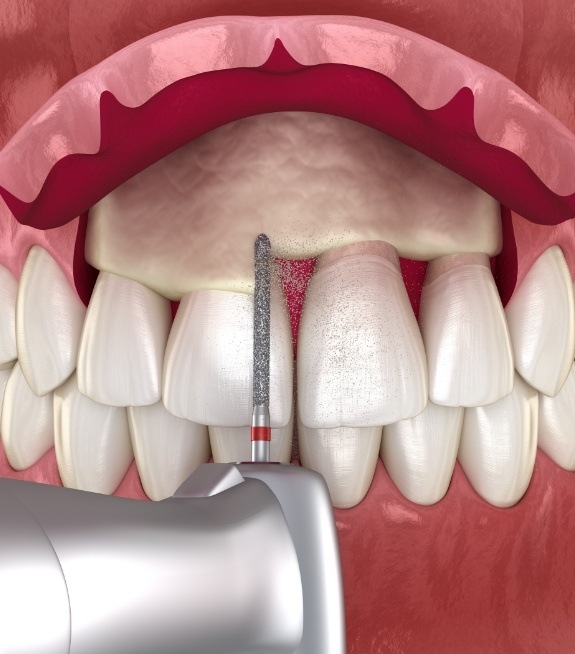
The pockets that form when the gums pull away from the teeth can make it difficult to thoroughly clean your mouth. To eliminate these pockets, we may perform a gingivectomy, which simply involves removing or reshaping loose gum tissue. This makes it easier for us to get rid of any plaque or tartar that has built up on the roots of your teeth. We can perform this procedure with a laser to keep you as comfortable as possible.
Frenectomies
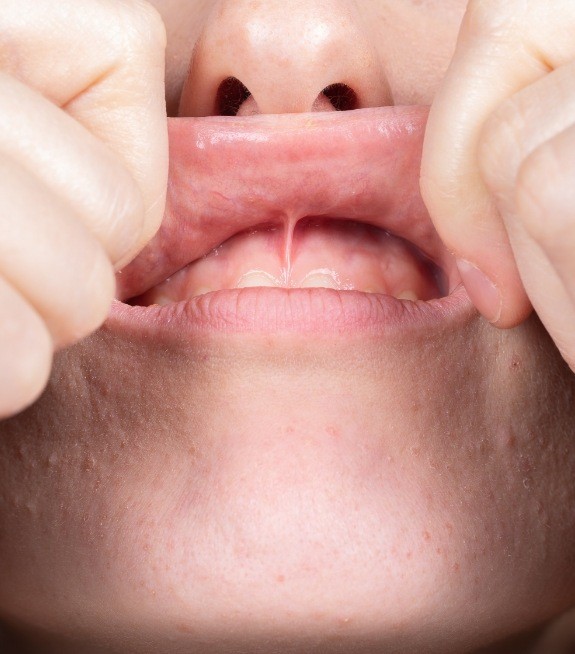
Young children often suffer from an overdeveloped frenum (band of tissue) that stops them from moving their lips or tongue properly. Leaving this problem alone can lead to any number of developmental issues, which is why we recommend having a frenectomy performed as soon as possible. We’ll simply remove the unnecessary tissue so that your little one can move their mouth freely. The procedure is quick, and the discomfort is minimal; we’ll go out of our way to make it as stress-free for your child as possible.
Biopsies

If we find oral cancer symptoms, we recommend having a biopsy performed. A small sample of tissue will be taken from your mouth so that it can be examined more closely. This makes it possible to determine whether any abnormalities are truly a sign of oral cancer or if there’s another explanation. It’s important to have oral cancer diagnosed quickly; your chances of survival over the next five years will be much higher if treatment begins before the disease has a chance to spread.
Periodontal Therapy Dental Implants Sedation Dentistry View Our Services
